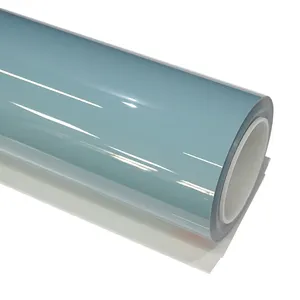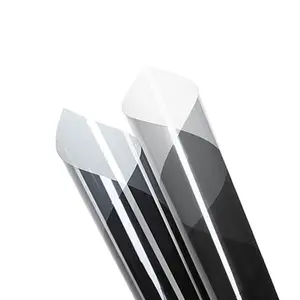A blue window tint is an aesthetic and functional aftermarket modification for vehicles. It involves applying a thin layer of film, often made of polyester, to the interior of a car’s windows. This tinting film comes in a wide range of shades, but blue is a popular choice due to its unique aesthetics and beneficial features.
Advantages and types of blue window tints
The blue auto tint offers numerous advantages. Firstly, it provides increased privacy by obscuring the inside of the vehicle from outside view. Secondly, it reduces the amount of heat that enters the car, thereby helping to maintain a comfortable interior temperature. Thirdly, it blocks harmful ultraviolet rays, protecting the car's occupants and interior from sun damage. Lastly, the blue tint gives the vehicle a stylish and unique appearance.
There are several types of blue tint for windows available in the market. Dyed window tint is the affordable and common type, ideal for those seeking privacy and a basic level of heat and UV protection. On the other hand, metalized window tint offers superior heat and UV protection, as well as added strength to the window. However, it may interfere with electronic devices within the car. The premium option is the ceramic window tint, which provides a good level of heat and UV protection without interfering with electronic devices. It's also durable and long-lasting.
Applications and features of blue window tints
The application of blue auto window tint is not limited to cars. It can also be used in other types of vehicles, such as trucks, SUVs, vans, and even boats. Furthermore, this tint can be applied to residential and commercial windows for increased privacy and energy efficiency. It's also common to see blue tint for cars in the automotive industry, where it's used to enhance the aesthetics of luxury vehicles like the Mercedes blue window tint.
The notable feature of the blue automotive window tint is its color. Unlike traditional black or grey tints, the blue tint offers a unique aesthetic appeal. In terms of performance, the features vary depending on the type of tint. For instance, dyed window tints offer basic protection against heat and UV rays, while metalized and ceramic tints provide superior protection. The durability and lifespan of the tint also depend on its type and the quality of installation.
Materials of blue window tints
The primary material used in the production of blue car tinted windows is polyester. It's chosen for its clarity, color stability, and strength. The tinting film may also contain additional materials like dyes, metals, or ceramics, depending on the type of tint. These materials contribute to the tint's color, heat resistance, and UV protection properties. For premium tints like the blue window tint for cars, manufacturers use nano-ceramic technology to deliver superior heat and UV protection without compromising on clarity and color stability. The blue window tint offers a unique blend of aesthetics and functionality. Whether it's for a car, home, or office, it provides a stylish solution for privacy, heat control, and UV protection.





































 浙公网安备 33010002000092号
浙公网安备 33010002000092号 浙B2-20120091-4
浙B2-20120091-4